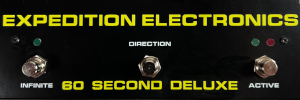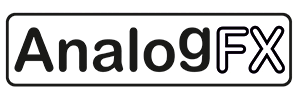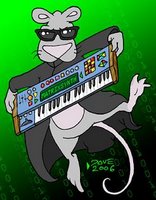
Showing posts sorted by date for query Tom Rhea. Sort by relevance Show all posts
Showing posts sorted by date for query Tom Rhea. Sort by relevance Show all posts
Tuesday, April 14, 2009
Monday, April 13, 2009
360 Systems 20/20 Frequency Shifter (BODE)
 via this auction
via this auction"This is a very rare item, probably the first I've seen one on ebay. It is a Frequency Shifter, model 20/20 by 360 Systems.
360 Systems was (and still is) an innovative company that developed this pitch changer (as used by Synergy/Larry Fast, John McLaughlin), one of the first guitar synths (John McLaughlin) the first sample-playback keyboard and many audio post devices since. They also developed the first LINN Drum for Roger Linn. Bob Easton was/is their clever designer."
360 based their design on Harold Bode's rare "Klangumwandler" that was made and sold for Moog in the late 1960s and early '70s.
The Moog/Bode 6552 Klangumwandler ('sound-changer', in German) was an interesting concept, to modify pitch (frequency) without changing the overtone structure. Bode's invention was first created for Ussachevsky's electronic music studio at Columbia University (Bob was quite familiar with the composer and studio, as well as his various students like Wendy Carlos. Wendy and Tomita used this module on their classic albums. Club of the Knobs synthesizers now make a very accurate replica of the original Bode/Moog module and you can see it (and the similarity to this 360 design) on their website. The 360 has the same "series of 5" settings (5,50,500) as the Bode - and mixed vs. independent outputs, although the squelch is internal on the 360 via trimpot. There is CV (Voltage Control) of the frequency - great with a sequencer, CV pedal (McLaughlin) or random. These are similar to a ring modulator, but have a VERY unusual effect at the lowest settings. This is the effect I love (and why anyone should own this) - a deep phasing in stereo, without "messing up" the sonic quality of the original signal - all bass a treble frequencies remain solid, and the harmonics shift around in stereo beautifully. It's weird but not ugly - very HiFi and cool-sounding.
BODE
some text from the web):
'... the EWE, which stands for Electro Wagnerian Emancipator. There's only one of them; it was designed for me by Bob Easton at 360 Systems… That is now gathering dust in the warehouse. I tried to use it on "Big Swifty" from Waka/Jawaka - Hot Rats, but it didn't end up on the final track." (BTW synth geeks - this is mystery item was basically just an EML Polybox, same idea!)
'We also have some neat little 360 Systems model 2800 programmable equalizers, which are four-band parametric with memory storage for saving any particular settings that you may like. Those were designed by Bob Easton and are no longer available, but we have a few of them.'"
via Brian Kehew of Moog Cookbook
Update via eben in the comments: "check out the comment in that ebay auction in the questions section - none other than Tom Rhea, author of the minimoog owners manual"
via the auction:
Q: Hey neighbor, interesting that you have a frequency shifter for sale, but your description that a klangumwandler shifts without changing the overtone structure is incorrect. Pitch shifting a la the Eventide Harmonizer does this; Harald Bode built frequency shifter(s) that provide a LINEAR shift in frequency (Hz) for all partials in the input signal. This will, of course drastically change the "overtone structure," not preserve it. Sorry to be a drudge about this, but I knew Harald well, teach this stuff at a well known music College," This message purely in the interest of sharing information. Hope you get a good penny. PS, I have several Bode 1630 FS (lucky me, but just knowing Harald was the real treat!) Tom Rhea (author Minimoog Owner's Manual, etc.) Good luck in the sale! Apr-14-09
A: Hey Tom - you are likely QUITE right. I only said it was based upon the Bode - which seems quite true given the controls and front panel, steps of "5's" etc. Obviously, the audio track given shows what this very unit does exactly, so no deception is implied.
Thursday, January 15, 2009
Crumar Spirit

via this auction
"OK, by now, everyone knows the Crumar Spirit was designed by some of the Moog folks, namely Dr Moog, Tom Rhea, and Jim Scott. What's never been explained is how or why. That's where I come in. This is how it might have happened...
Let's first set the stage.
 The year is 1982. The monophonic Prodigy and Rogue were still in production. Moog's attempt at a less-knobby synth (the Source) had been released the year before. The powerful but problematic MemoryMoog had finally started to ship and everyone involved really needed a break because of all the problems. New development had temporarily ground to a halt as all hands came on board to salvage the MemoryMoog effort.
The year is 1982. The monophonic Prodigy and Rogue were still in production. Moog's attempt at a less-knobby synth (the Source) had been released the year before. The powerful but problematic MemoryMoog had finally started to ship and everyone involved really needed a break because of all the problems. New development had temporarily ground to a halt as all hands came on board to salvage the MemoryMoog effort.During this time, the Rhodes Chroma had also recently been released.
Three Moog folks - Dr Moog, Tom Rhea, and Jim Scott decided to take a short holiday overseas to unwind and reset. They chose Italy as their destination and set off on their trip.
 Meanwhile...
Meanwhile...In Italy, Crumar had the DS-2 and Performer synths out there. They had also teamed up with a New York based firm to create the GDS and Synergy but they were having as many problems with them as Moog and ARP did with their recent polysynths.
So, the three Moog employees are in Italy, touring around and checking out the local culture. A chance meeting with Mario Crucianelli kickstarts an idea for a new synth. Moog as a company is stretched too thin and is too worn out to take on any new R&D. Dr. Moog and friends discuss features that they'd like to see. Since this isn't going to be branded as a Moog, there is some more freedom to borrow ideas from other synths and to vary from the traditional Moog designs. They have had good luck with the CEM 3340 and 3360 ICs in the MemoryMoog and the Chroma was using the 3350 VCF to create some unusual routings and new sounds. Rather than worry about licensing a Moog filter for this product, the team decided to go off on a new track and try a pair of 3350's and provide separate control over each filter chip.
 The idea for a monosynth that could sound traditional or radically modern was born and the Spirit is the result.
The idea for a monosynth that could sound traditional or radically modern was born and the Spirit is the result.Well, that's how it might have happened...
Let's get back around to the auction now.
I have a Crumar Spirit, serial # 62, that's been cleaned and calibrated. In addition to the synth (110 volts) and power cord, I'm including the owner's manual and schematics. In addition, I sketched out the trimpot locations and names for the VCO board to make future calibrations easier. As an added bonus (I'm all about giving you guys bonuses), I'm including 2 CEM 3340 VCO ICs, 1 CEM 3350 filter IC, and 2 CEM 3360 VCA ICs. So you'll never have to worry about CEMs again."
Monday, September 29, 2008
Crumar Spirit Serial Number 1
Note: Auction links are affiliate links for which the site may be compensated.
via this auction
"The first of the few exemplars ever made with serial number 00001!!
 The Crumar Spirit was designed in 1982 by Bob Moog, Jim Scott & Tom Rhea. The Spirit is original about his amazing not standard features, only fifty to one hundred of these beauties exist! It come in EXCELLENT cosmetic and perfect working order. It has a 37-note keyboard with 2 VCO’s. There are saw, triangle, and several square waveforms on both oscillators. You can sync both oscillators. The oscillators have an octave range from 32′ to 4′. Ring Modulation, low and high pass filters, 12 DB & 24DB slope, single & multiple triggering, keyboard filter tracking, band pass filtering, loudness envelope, filter envelope, arpeggiator linked to LFO (mod-X) with 4 different arpeggiations, LFO 1 modulated 6 different ways, a second waveshapable LFO called (shaper-y) with 4 fixed waveforms and shape control adjustable from saw to reverse-sawtooth, performance panel to include Auto & preset glide, and 3 performance wheels, pitch, Mod-x, and Shaper -Y. with the latter 2 having 5 different destinations. An audio mixer with ability to mix OSC A & B with Ring Modulator, and Noise. LFO 1 also has a red noise generator as well as a brightness control for overall boost of the high frequencies. A filter envelope with inverted and normal ADSR & a loudness envelope which can be bypassed. Output Jacks: External Gate in, External Pitch in, Keyboard Pitch out, Keyboard Gate out, OSC B Pedal, Filter Pedal, Shaper Audio Out, ADSR Mix Out, External Audio In. Features * Bob Moog design! * 37-note keyboard * Saw, triangle and several square waveforms on both ocillators Working voltage: 220 / 240 volts."
The Crumar Spirit was designed in 1982 by Bob Moog, Jim Scott & Tom Rhea. The Spirit is original about his amazing not standard features, only fifty to one hundred of these beauties exist! It come in EXCELLENT cosmetic and perfect working order. It has a 37-note keyboard with 2 VCO’s. There are saw, triangle, and several square waveforms on both oscillators. You can sync both oscillators. The oscillators have an octave range from 32′ to 4′. Ring Modulation, low and high pass filters, 12 DB & 24DB slope, single & multiple triggering, keyboard filter tracking, band pass filtering, loudness envelope, filter envelope, arpeggiator linked to LFO (mod-X) with 4 different arpeggiations, LFO 1 modulated 6 different ways, a second waveshapable LFO called (shaper-y) with 4 fixed waveforms and shape control adjustable from saw to reverse-sawtooth, performance panel to include Auto & preset glide, and 3 performance wheels, pitch, Mod-x, and Shaper -Y. with the latter 2 having 5 different destinations. An audio mixer with ability to mix OSC A & B with Ring Modulator, and Noise. LFO 1 also has a red noise generator as well as a brightness control for overall boost of the high frequencies. A filter envelope with inverted and normal ADSR & a loudness envelope which can be bypassed. Output Jacks: External Gate in, External Pitch in, Keyboard Pitch out, Keyboard Gate out, OSC B Pedal, Filter Pedal, Shaper Audio Out, ADSR Mix Out, External Audio In. Features * Bob Moog design! * 37-note keyboard * Saw, triangle and several square waveforms on both ocillators Working voltage: 220 / 240 volts."
via this auction
"The first of the few exemplars ever made with serial number 00001!!
 The Crumar Spirit was designed in 1982 by Bob Moog, Jim Scott & Tom Rhea. The Spirit is original about his amazing not standard features, only fifty to one hundred of these beauties exist! It come in EXCELLENT cosmetic and perfect working order. It has a 37-note keyboard with 2 VCO’s. There are saw, triangle, and several square waveforms on both oscillators. You can sync both oscillators. The oscillators have an octave range from 32′ to 4′. Ring Modulation, low and high pass filters, 12 DB & 24DB slope, single & multiple triggering, keyboard filter tracking, band pass filtering, loudness envelope, filter envelope, arpeggiator linked to LFO (mod-X) with 4 different arpeggiations, LFO 1 modulated 6 different ways, a second waveshapable LFO called (shaper-y) with 4 fixed waveforms and shape control adjustable from saw to reverse-sawtooth, performance panel to include Auto & preset glide, and 3 performance wheels, pitch, Mod-x, and Shaper -Y. with the latter 2 having 5 different destinations. An audio mixer with ability to mix OSC A & B with Ring Modulator, and Noise. LFO 1 also has a red noise generator as well as a brightness control for overall boost of the high frequencies. A filter envelope with inverted and normal ADSR & a loudness envelope which can be bypassed. Output Jacks: External Gate in, External Pitch in, Keyboard Pitch out, Keyboard Gate out, OSC B Pedal, Filter Pedal, Shaper Audio Out, ADSR Mix Out, External Audio In. Features * Bob Moog design! * 37-note keyboard * Saw, triangle and several square waveforms on both ocillators Working voltage: 220 / 240 volts."
The Crumar Spirit was designed in 1982 by Bob Moog, Jim Scott & Tom Rhea. The Spirit is original about his amazing not standard features, only fifty to one hundred of these beauties exist! It come in EXCELLENT cosmetic and perfect working order. It has a 37-note keyboard with 2 VCO’s. There are saw, triangle, and several square waveforms on both oscillators. You can sync both oscillators. The oscillators have an octave range from 32′ to 4′. Ring Modulation, low and high pass filters, 12 DB & 24DB slope, single & multiple triggering, keyboard filter tracking, band pass filtering, loudness envelope, filter envelope, arpeggiator linked to LFO (mod-X) with 4 different arpeggiations, LFO 1 modulated 6 different ways, a second waveshapable LFO called (shaper-y) with 4 fixed waveforms and shape control adjustable from saw to reverse-sawtooth, performance panel to include Auto & preset glide, and 3 performance wheels, pitch, Mod-x, and Shaper -Y. with the latter 2 having 5 different destinations. An audio mixer with ability to mix OSC A & B with Ring Modulator, and Noise. LFO 1 also has a red noise generator as well as a brightness control for overall boost of the high frequencies. A filter envelope with inverted and normal ADSR & a loudness envelope which can be bypassed. Output Jacks: External Gate in, External Pitch in, Keyboard Pitch out, Keyboard Gate out, OSC B Pedal, Filter Pedal, Shaper Audio Out, ADSR Mix Out, External Audio In. Features * Bob Moog design! * 37-note keyboard * Saw, triangle and several square waveforms on both ocillators Working voltage: 220 / 240 volts."
Thursday, July 10, 2008
Moog Micromoog
via this auction
"This is Moog Music's 'synthesizer for everyman. [The] design approach for the Micromoog was to use a minimal number of functional building blocks and to configure the instrument for the greatest amount of performer control over these blocks. The Micromoog consists of the basic necessities: one voltage controlled oscillator (VCO), one voltage controlled amplifier (VCA), two contour generators, and one sample and hold. The 'open system' inputs and outputs make this Micromoog a basic musical building block which can be expanded to meet the performer's growth.'----[from Micromoog Operation Manual ---by Tom Rhea]"
Wednesday, June 18, 2008
Crumar Spirit
Note: Auction links are affiliate links for which the site may be compensated.
via this auction
"The Crumar Spirit was originally designed by Bob Moog (himself), Jim Scott & Tom Rhea and released back around 1982-83. These are the three people behind the Minimoog.
This is said to be the most flexible monophonic synth ever. It has a 37-note keyboard with 2 VCO's. There are saw, triangle, and several square waveforms on both oscillators.The oscillators have an octave range from 32' to 4'. Ring Modulation, low and high pass filters, 12 DB & 24DB slope, single & multiple triggering, keyboard filter tracking, band pass filtering, loudness envelope, filter envelope, arpeggiator linked to LFO (mod-X) with 4 different arpeggiations, LFO 1 modulated 6 different ways, a second waveshapable LFO called (shaper-y) with 4 fixed waveforms and shape control adjustable from saw to reverse-sawtooth, performance panel to include Auto & preset glide, and 3 performance wheels, pitch, Mod-x, and Shaper -Y. with the latter 2 having 5 different destinations. An audio mixer with ability to mix OSC A & B with Ring Modulator, and Noise. LFO 1 also has a red noise generator as well as a brightness control for overall boost of the high frequencies. A filter envelope with inverted and normal ADSR & a loudness envelope which can be bypassed.
 Output Jacks: External Gate in, External Pitch in, Keyboard Pitch out, Keyboard Gate out, OSC B Pedal, Filter Pedal, Shaper Audio Out, ADSR Mix Out, External Audio In.
Output Jacks: External Gate in, External Pitch in, Keyboard Pitch out, Keyboard Gate out, OSC B Pedal, Filter Pedal, Shaper Audio Out, ADSR Mix Out, External Audio In.
The Spirit is a treasure trove of desirable synth chips, with a pair of CEM3340 oscillators, a pair of CEM3350 Dual VCFs, and no fewer than six CEM3360 Dual VCAs. If this means little to you, I should point out that the 3340 provided the voicing for the Moog Memorymoog, the Oberheim OBXa, OBSX and OB8, the Roland SH101, MC202 and Jupiter 6, early revisions of the Roland MKS80 Super Jupiter, the Rev.3.x Prophet 5s, all Prophet 10s, the T8, the Pro One and the Prophet 600. 3360 VCAs were used in a huge range of instruments, including the Ensoniq ESQ1 and SQ80, the Linndrum, the Memorymoog, numerous Oberheims, the PPG Wave 2.2 and 2.3, the Chroma, the Jupiter 6 and MKS80, and some of the Prophets. The Spirit shares its architecture with the very best. GOOD LUCK!
SoundOnSound
Gordon Reid"


via this auction
"The Crumar Spirit was originally designed by Bob Moog (himself), Jim Scott & Tom Rhea and released back around 1982-83. These are the three people behind the Minimoog.
This is said to be the most flexible monophonic synth ever. It has a 37-note keyboard with 2 VCO's. There are saw, triangle, and several square waveforms on both oscillators.The oscillators have an octave range from 32' to 4'. Ring Modulation, low and high pass filters, 12 DB & 24DB slope, single & multiple triggering, keyboard filter tracking, band pass filtering, loudness envelope, filter envelope, arpeggiator linked to LFO (mod-X) with 4 different arpeggiations, LFO 1 modulated 6 different ways, a second waveshapable LFO called (shaper-y) with 4 fixed waveforms and shape control adjustable from saw to reverse-sawtooth, performance panel to include Auto & preset glide, and 3 performance wheels, pitch, Mod-x, and Shaper -Y. with the latter 2 having 5 different destinations. An audio mixer with ability to mix OSC A & B with Ring Modulator, and Noise. LFO 1 also has a red noise generator as well as a brightness control for overall boost of the high frequencies. A filter envelope with inverted and normal ADSR & a loudness envelope which can be bypassed.
 Output Jacks: External Gate in, External Pitch in, Keyboard Pitch out, Keyboard Gate out, OSC B Pedal, Filter Pedal, Shaper Audio Out, ADSR Mix Out, External Audio In.
Output Jacks: External Gate in, External Pitch in, Keyboard Pitch out, Keyboard Gate out, OSC B Pedal, Filter Pedal, Shaper Audio Out, ADSR Mix Out, External Audio In.The Spirit is a treasure trove of desirable synth chips, with a pair of CEM3340 oscillators, a pair of CEM3350 Dual VCFs, and no fewer than six CEM3360 Dual VCAs. If this means little to you, I should point out that the 3340 provided the voicing for the Moog Memorymoog, the Oberheim OBXa, OBSX and OB8, the Roland SH101, MC202 and Jupiter 6, early revisions of the Roland MKS80 Super Jupiter, the Rev.3.x Prophet 5s, all Prophet 10s, the T8, the Pro One and the Prophet 600. 3360 VCAs were used in a huge range of instruments, including the Ensoniq ESQ1 and SQ80, the Linndrum, the Memorymoog, numerous Oberheims, the PPG Wave 2.2 and 2.3, the Chroma, the Jupiter 6 and MKS80, and some of the Prophets. The Spirit shares its architecture with the very best. GOOD LUCK!
SoundOnSound
Gordon Reid"


Sunday, April 27, 2008
Crumar Spirit SN 00015 w/ Gig Bag
Note: Auction links are affiliate links for which the site may be compensated.
via this auction
 "Serial number 15 It is extremly rare: about 50 models ever made!!! The Crumar Spirit was designed in 1982 by Bob Moog, Jim Scott & Tom Rhea. The Spirit is original about his amazing not standard features, only fifty to one hundred of these beauties exist! It come in EXCELLENT cosmetic and perfect working order, still with the original skin travel bag. The Crumar Spirit was designed in 1982 by Bob Moog, Jim Scott & Tom Rhea. It was not a commercial success so only fifty to one hundred of these beauties exist! It has a 37-note keyboard with 2 VCO’s. There are saw, triangle, and several square waveforms on both oscillators. You can sync both oscillators. The oscillators have an octave range from 32′ to 4′. Ring Modulation, low and high pass filters, 12 DB & 24DB slope, single & multiple triggering, keyboard filter tracking, band pass filtering, loudness envelope, filter envelope, arpeggiator linked to LFO (mod-X) with 4 different arpeggiations, LFO 1 modulated 6 different ways, a second waveshapable LFO called (shaper-y) with 4 fixed waveforms and shape control adjustable from saw to reverse-sawtooth, performance panel to include Auto & preset glide, and 3 performance wheels, pitch, Mod-x, and Shaper -Y. with the latter 2 having 5 different destinations. An audio mixer with ability to mix OSC A & B with Ring Modulator, and Noise. LFO 1 also has a red noise generator as well as a brightness control for overall boost of the high frequencies. A filter envelope with inverted and normal ADSR & a loudness envelope which can be bypassed. Output Jacks: External Gate in, External Pitch in, Keyboard Pitch out, Keyboard Gate out, OSC B Pedal, Filter Pedal, Shaper Audio Out, ADSR Mix Out, External Audio In. Features * Bob Moog design! * 37-note keyboard * Saw, triangle and several square waveforms on both ocillators Working voltage: 220 / 240 volts."
"Serial number 15 It is extremly rare: about 50 models ever made!!! The Crumar Spirit was designed in 1982 by Bob Moog, Jim Scott & Tom Rhea. The Spirit is original about his amazing not standard features, only fifty to one hundred of these beauties exist! It come in EXCELLENT cosmetic and perfect working order, still with the original skin travel bag. The Crumar Spirit was designed in 1982 by Bob Moog, Jim Scott & Tom Rhea. It was not a commercial success so only fifty to one hundred of these beauties exist! It has a 37-note keyboard with 2 VCO’s. There are saw, triangle, and several square waveforms on both oscillators. You can sync both oscillators. The oscillators have an octave range from 32′ to 4′. Ring Modulation, low and high pass filters, 12 DB & 24DB slope, single & multiple triggering, keyboard filter tracking, band pass filtering, loudness envelope, filter envelope, arpeggiator linked to LFO (mod-X) with 4 different arpeggiations, LFO 1 modulated 6 different ways, a second waveshapable LFO called (shaper-y) with 4 fixed waveforms and shape control adjustable from saw to reverse-sawtooth, performance panel to include Auto & preset glide, and 3 performance wheels, pitch, Mod-x, and Shaper -Y. with the latter 2 having 5 different destinations. An audio mixer with ability to mix OSC A & B with Ring Modulator, and Noise. LFO 1 also has a red noise generator as well as a brightness control for overall boost of the high frequencies. A filter envelope with inverted and normal ADSR & a loudness envelope which can be bypassed. Output Jacks: External Gate in, External Pitch in, Keyboard Pitch out, Keyboard Gate out, OSC B Pedal, Filter Pedal, Shaper Audio Out, ADSR Mix Out, External Audio In. Features * Bob Moog design! * 37-note keyboard * Saw, triangle and several square waveforms on both ocillators Working voltage: 220 / 240 volts."
via this auction
 "Serial number 15 It is extremly rare: about 50 models ever made!!! The Crumar Spirit was designed in 1982 by Bob Moog, Jim Scott & Tom Rhea. The Spirit is original about his amazing not standard features, only fifty to one hundred of these beauties exist! It come in EXCELLENT cosmetic and perfect working order, still with the original skin travel bag. The Crumar Spirit was designed in 1982 by Bob Moog, Jim Scott & Tom Rhea. It was not a commercial success so only fifty to one hundred of these beauties exist! It has a 37-note keyboard with 2 VCO’s. There are saw, triangle, and several square waveforms on both oscillators. You can sync both oscillators. The oscillators have an octave range from 32′ to 4′. Ring Modulation, low and high pass filters, 12 DB & 24DB slope, single & multiple triggering, keyboard filter tracking, band pass filtering, loudness envelope, filter envelope, arpeggiator linked to LFO (mod-X) with 4 different arpeggiations, LFO 1 modulated 6 different ways, a second waveshapable LFO called (shaper-y) with 4 fixed waveforms and shape control adjustable from saw to reverse-sawtooth, performance panel to include Auto & preset glide, and 3 performance wheels, pitch, Mod-x, and Shaper -Y. with the latter 2 having 5 different destinations. An audio mixer with ability to mix OSC A & B with Ring Modulator, and Noise. LFO 1 also has a red noise generator as well as a brightness control for overall boost of the high frequencies. A filter envelope with inverted and normal ADSR & a loudness envelope which can be bypassed. Output Jacks: External Gate in, External Pitch in, Keyboard Pitch out, Keyboard Gate out, OSC B Pedal, Filter Pedal, Shaper Audio Out, ADSR Mix Out, External Audio In. Features * Bob Moog design! * 37-note keyboard * Saw, triangle and several square waveforms on both ocillators Working voltage: 220 / 240 volts."
"Serial number 15 It is extremly rare: about 50 models ever made!!! The Crumar Spirit was designed in 1982 by Bob Moog, Jim Scott & Tom Rhea. The Spirit is original about his amazing not standard features, only fifty to one hundred of these beauties exist! It come in EXCELLENT cosmetic and perfect working order, still with the original skin travel bag. The Crumar Spirit was designed in 1982 by Bob Moog, Jim Scott & Tom Rhea. It was not a commercial success so only fifty to one hundred of these beauties exist! It has a 37-note keyboard with 2 VCO’s. There are saw, triangle, and several square waveforms on both oscillators. You can sync both oscillators. The oscillators have an octave range from 32′ to 4′. Ring Modulation, low and high pass filters, 12 DB & 24DB slope, single & multiple triggering, keyboard filter tracking, band pass filtering, loudness envelope, filter envelope, arpeggiator linked to LFO (mod-X) with 4 different arpeggiations, LFO 1 modulated 6 different ways, a second waveshapable LFO called (shaper-y) with 4 fixed waveforms and shape control adjustable from saw to reverse-sawtooth, performance panel to include Auto & preset glide, and 3 performance wheels, pitch, Mod-x, and Shaper -Y. with the latter 2 having 5 different destinations. An audio mixer with ability to mix OSC A & B with Ring Modulator, and Noise. LFO 1 also has a red noise generator as well as a brightness control for overall boost of the high frequencies. A filter envelope with inverted and normal ADSR & a loudness envelope which can be bypassed. Output Jacks: External Gate in, External Pitch in, Keyboard Pitch out, Keyboard Gate out, OSC B Pedal, Filter Pedal, Shaper Audio Out, ADSR Mix Out, External Audio In. Features * Bob Moog design! * 37-note keyboard * Saw, triangle and several square waveforms on both ocillators Working voltage: 220 / 240 volts."
Tuesday, October 30, 2007
The Electronic Arts Foundation
 "The Electronic Arts Foundation was started by Tom Rhea, David VanKoevering, and Les Trubey (my father) to promote electronic music and preserve historical electronic musical instruments.
"The Electronic Arts Foundation was started by Tom Rhea, David VanKoevering, and Les Trubey (my father) to promote electronic music and preserve historical electronic musical instruments.What follows is the text of an article written by Tom Rhea in 1976 for Contemporary Keyboard magazine. Reprints of this article were included in an info package with each synthesizer sold.
Tom Rhea is the president of the Electronic Arts Foundation, has done extensive work as an electronic music clinician, and has served as a synthesizer consultant to keyboard players such as CK Advisory Board member Keith Emerson. Rhea has a Ph.D. in music from the George Peabody College, in Nashville, Tennessee, with The Evolution Of Electronic Musical Instruments In The United States as his dissertation topic. Tom is also a member of MENC (Music Educators National Conference) and the Audio Engineering Society, and has written instruction manuals for Moog Music's performance oriented synthesizer line."
link to full article
Crumar Spirit
YouTube via fututronic. via Nusonica.
"The Crumar Spirit was designed in 1982 by Bob Moog, Jim Scott & Tom Rhea. It was not a commercial success so only fifty to one hundred of these beauties exist!
It has a 37-note keyboard with 2 VCO's. There are saw, triangle, and several square waveforms on both oscillators. You can sync both oscillators. The oscillators have an octave range from 32' to 4'. Ring Modulation, low and high pass filters, 12 DB & 24DB slope, single & multiple triggering, keyboard filter tracking, band pass filtering, loudness envelope, filter envelope, arpeggiator linked to LFO (mod-X) with 4 different arpeggiations, LFO 1 modulated 6 different ways, a second waveshapable LFO called (shaper-y) with 4 fixed waveforms and shape control adjustable from saw to reverse-sawtooth, performance panel to include Auto & preset glide, and 3 performance wheels, pitch, Mod-x, and Shaper -Y. with the latter 2 having 5 different destinations. An audio mixer with ability to mix OSC A & B with Ring Modulator, and Noise. LFO 1 also has a red noise generator as well as a brightness control for overall boost of the high frequencies. A filter envelope with inverted and normal ADSR & a loudness envelope which can be bypassed. Output Jacks: External Gate in, External Pitch in, Keyboard Pitch out, Keyboard Gate out, OSC B Pedal, Filter Pedal, Shaper Audio Out, ADSR Mix Out, External Audio In.
Features * Bob Moog design! * 37-note keyboard * Saw, triangle and several square waveforms on both ocillators" Crumar Spirit video.
Monday, April 30, 2007
Crumar Spirit
Note: Auction links are affiliate links for which the site may be compensated.
via this auction
 Details:
Details:
"Only about 100 of these made which makes this a very rare find. This keyboard have been compared to the top analog keyboards on the market. The Crumar Spirit was originally designed by Bob Moog (himself), Jim Scott & Tom Rhea and released back in 1983. It is a full featured analog monophonic synthesizer with 2 VCO's so it's got a pretty fat tone, but not as much as the classic 3-VCO Minimoog. However it is considerably more flexible than the latter. It has a basic 37-note keyboard without velocity or aftertouch. The two oscillators feature basic sawtooth, triangle and square waves and can be synced together. The filter section is very nice featuring low-, high- and band-pass filters and switchable 12dB or 24dB slopes. Other features of the filter include an independent envelope with inverted and normal ADSR, key tracking and single or multiple triggering of the filter. Some other features of the Spirit include a built-in ring-modulator, an Arpeggiator with 3 different patterns and that can be linked to the LFO, and there's an external audio input for running external sounds through its filters, LFOs or Ring Mod. For the hands-on approach, the Spirit is sure to please. There are 24 knobs, 10 switches and 15 sliders to start. There are 3 performance wheels for controlling the Pitch, Mod-X and Shaper-Y modulation effects (see LFO specs below). Using those with the Arpeggiator can get pretty wild. The Arpeggiator features 3 modes: Ripple (Up/Down), Arpeggio (Up several octaves) and Leap (Goes up 1 and then 4 octaves). There are also Auto and preset Glide modes for getting some elasticity or bending effects. Since all the LFOs, envelopes and filters are quite flexible you are sure to get some weird noises, fat basses, synths, etc. with the Spirit."
via this auction
 Details:
Details:"Only about 100 of these made which makes this a very rare find. This keyboard have been compared to the top analog keyboards on the market. The Crumar Spirit was originally designed by Bob Moog (himself), Jim Scott & Tom Rhea and released back in 1983. It is a full featured analog monophonic synthesizer with 2 VCO's so it's got a pretty fat tone, but not as much as the classic 3-VCO Minimoog. However it is considerably more flexible than the latter. It has a basic 37-note keyboard without velocity or aftertouch. The two oscillators feature basic sawtooth, triangle and square waves and can be synced together. The filter section is very nice featuring low-, high- and band-pass filters and switchable 12dB or 24dB slopes. Other features of the filter include an independent envelope with inverted and normal ADSR, key tracking and single or multiple triggering of the filter. Some other features of the Spirit include a built-in ring-modulator, an Arpeggiator with 3 different patterns and that can be linked to the LFO, and there's an external audio input for running external sounds through its filters, LFOs or Ring Mod. For the hands-on approach, the Spirit is sure to please. There are 24 knobs, 10 switches and 15 sliders to start. There are 3 performance wheels for controlling the Pitch, Mod-X and Shaper-Y modulation effects (see LFO specs below). Using those with the Arpeggiator can get pretty wild. The Arpeggiator features 3 modes: Ripple (Up/Down), Arpeggio (Up several octaves) and Leap (Goes up 1 and then 4 octaves). There are also Auto and preset Glide modes for getting some elasticity or bending effects. Since all the LFOs, envelopes and filters are quite flexible you are sure to get some weird noises, fat basses, synths, etc. with the Spirit."
Sunday, December 03, 2006
Synth Books
See the Synth Books label for more.
Also see the scans label for more synth documentation.

The A-X of Analogue Synthesizers by Peter Forest

Vintage Synthesizers by Mark Vail

Essential Retro by James Grahame
Also see the scans label for more synth documentation.

The A-X of Analogue Synthesizers by Peter Forest

Vintage Synthesizers by Mark Vail

Essential Retro by James Grahame
Monday, January 09, 2006
The Crumar Spirit on Sound on Sound
The Crumar Spirit came up on the AH mailing list recently and non other than Gordon Reid posted a link the the SOS article on the Crumar Spirit. SOS is a great resource in that they post many of their reviews free of charge online.

"Nevertheless, Crumar singularly failed to make it into the big league, so when they announced the Spirit in 1983, nobody took any notice. The world's interest was only marginally more piqued when Crumar let it be known that Jim Scott (one of the co-designers of the Minimoog), Tom Rhea (another Moog employee best known for writing many of Moog's synthesizer manuals) and none other than Bob Moog himself had helped design it. And that's a shame, because, as you will see, the Spirit is one of the most complex, challenging, and -- above all -- powerful monosynths ever produced."

"Nevertheless, Crumar singularly failed to make it into the big league, so when they announced the Spirit in 1983, nobody took any notice. The world's interest was only marginally more piqued when Crumar let it be known that Jim Scott (one of the co-designers of the Minimoog), Tom Rhea (another Moog employee best known for writing many of Moog's synthesizer manuals) and none other than Bob Moog himself had helped design it. And that's a shame, because, as you will see, the Spirit is one of the most complex, challenging, and -- above all -- powerful monosynths ever produced."
Monday, December 26, 2005
Synthmas Presents
And I'm back. Hope everyone had a great holiday weekend. I thought I'd put up a post on the synth goodies I got for xmas this year. Belated xmas presents on my list are James Grahame's Essential Retro, Peter Forests revised A-Z Books and the Analogue Heaven Synthesizer Museum book, and finally the Moog DVD.
Different Skies Arcs & Angles DVD
Synth centered music performance that happened this year. I put up a few posts including this one when I heard about it. I can't wait to check out this performance.
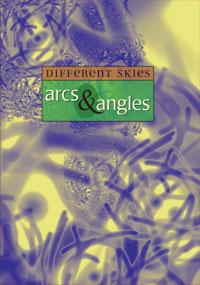
Learning Music With Synthesizers
Cool book about sound synthesis authored by David Friend and Alan R. Pearlman of ARP as well as Thomas D. Piggott. Not sure if Piggott was part of ARP; if you know feel free to comment. The book came out in 1974 and uses the ARP Odyssey as an example to demonstrate creating different types of sounds.

Synthesizer Basics
Haven't had a chance to flip through this one yet, but it looks good. Features Bob Moog, Roger Powell, Tom Rhea and Steve Porcaro. Volume 1 put out by Keyboard Magazine back in 1984.
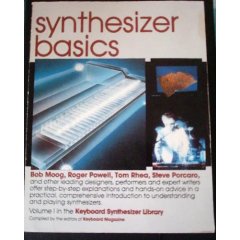
Analog Days
This one is coming in the mail. I posted on this earlier as well. I can't wait to read this one as it will be more about the history of synthesis and should be a great read.
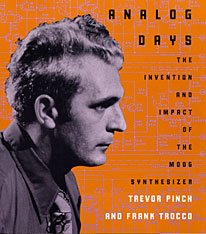
Real World Digital Audio
I also received a copy of Peter Kirn's Real World Digital Audio. I'm hearing it's a great book and just looking through the chapters I'm looking forward to it.

Oh, and of course there was this amazing surprise. : )

Different Skies Arcs & Angles DVD
Synth centered music performance that happened this year. I put up a few posts including this one when I heard about it. I can't wait to check out this performance.

Learning Music With Synthesizers
Cool book about sound synthesis authored by David Friend and Alan R. Pearlman of ARP as well as Thomas D. Piggott. Not sure if Piggott was part of ARP; if you know feel free to comment. The book came out in 1974 and uses the ARP Odyssey as an example to demonstrate creating different types of sounds.

Synthesizer Basics
Haven't had a chance to flip through this one yet, but it looks good. Features Bob Moog, Roger Powell, Tom Rhea and Steve Porcaro. Volume 1 put out by Keyboard Magazine back in 1984.

Analog Days
This one is coming in the mail. I posted on this earlier as well. I can't wait to read this one as it will be more about the history of synthesis and should be a great read.

Real World Digital Audio
I also received a copy of Peter Kirn's Real World Digital Audio. I'm hearing it's a great book and just looking through the chapters I'm looking forward to it.

Oh, and of course there was this amazing surprise. : )

PREVIOUS PAGE
HOME
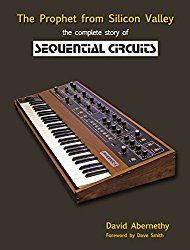
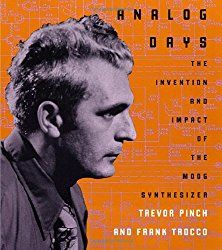
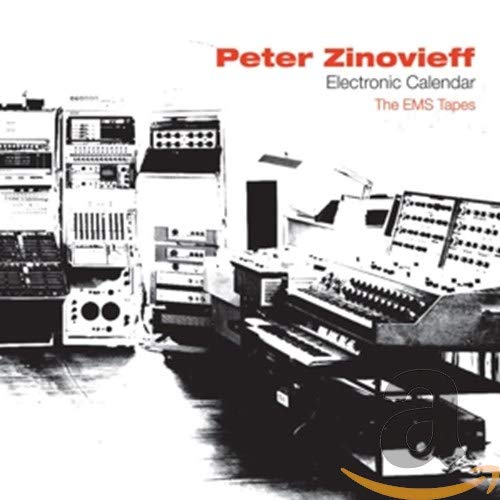
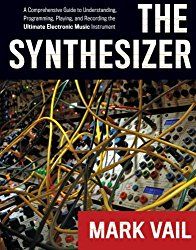
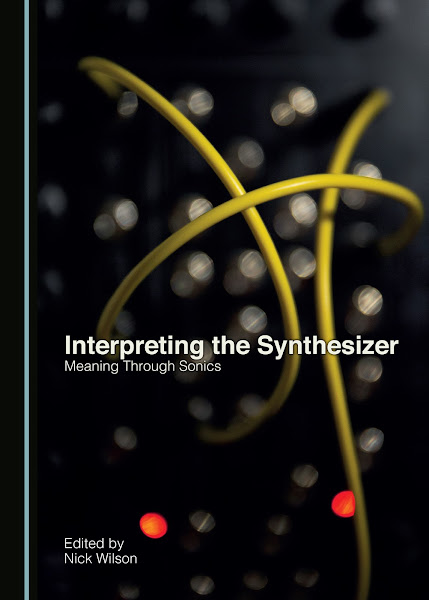
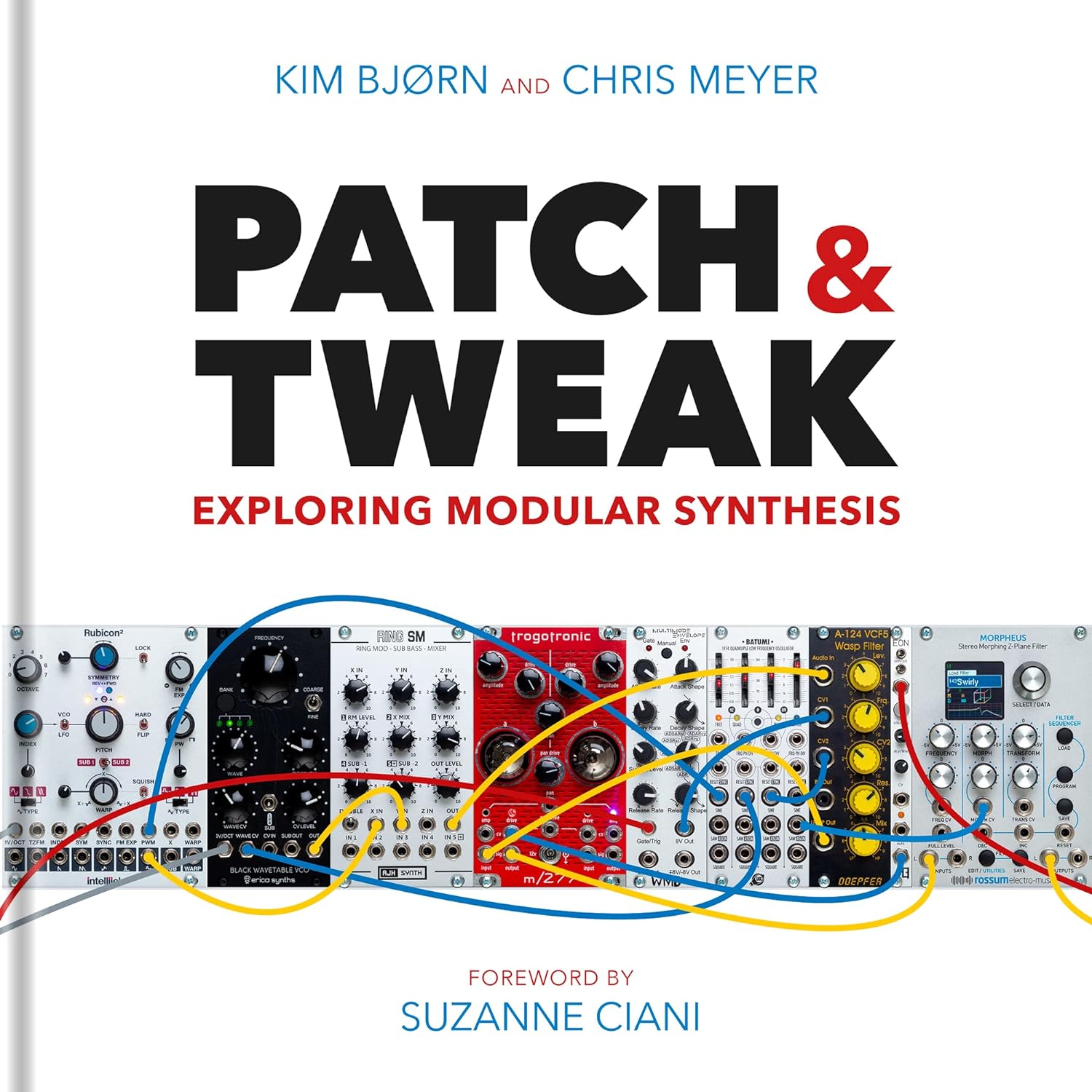
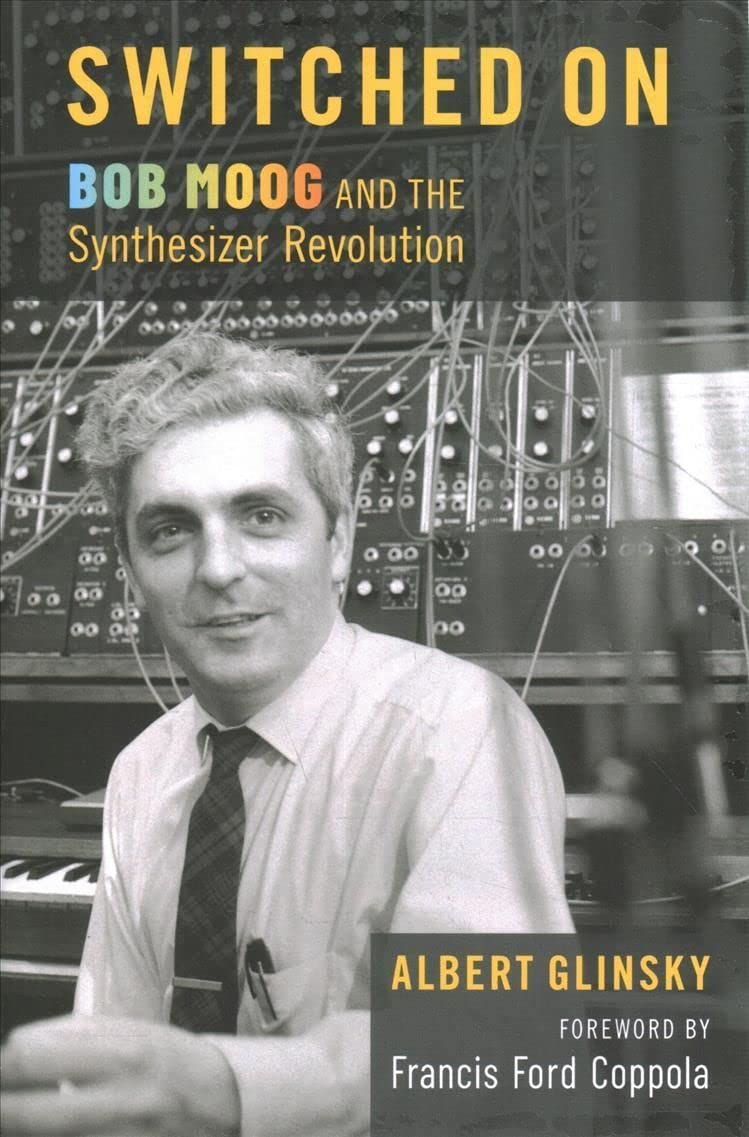
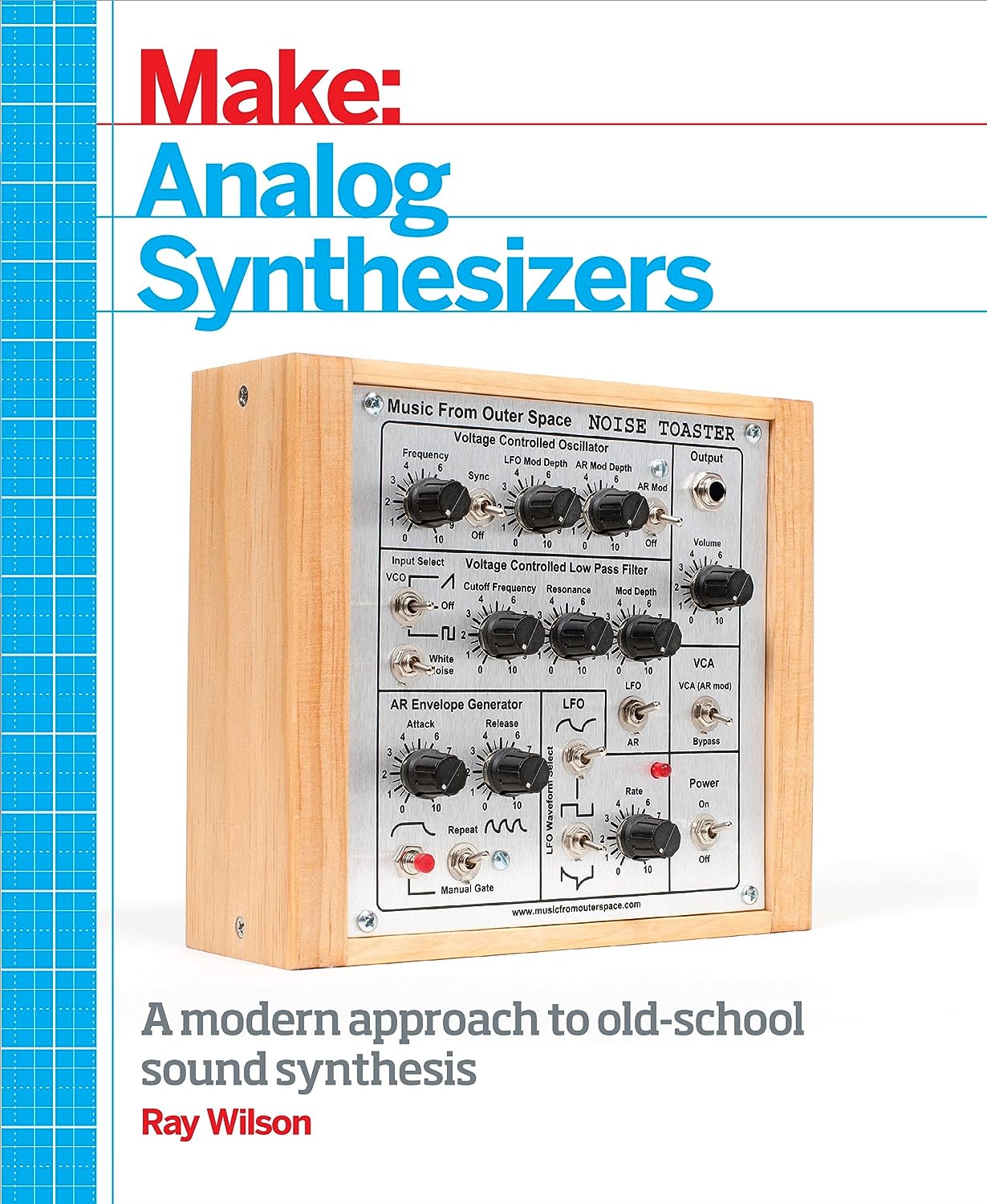
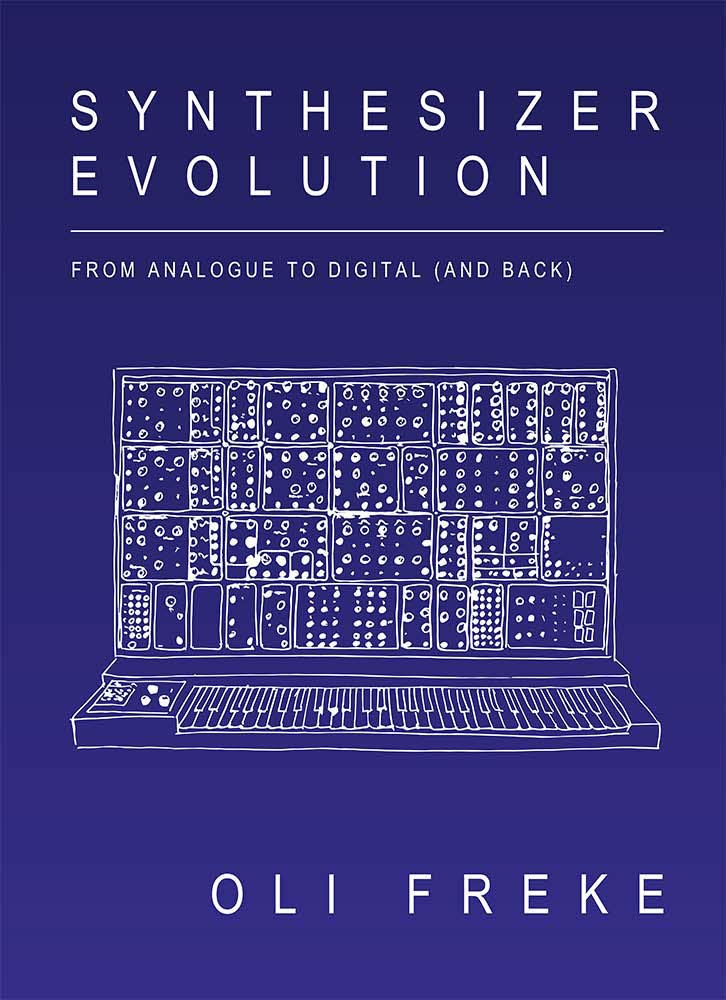
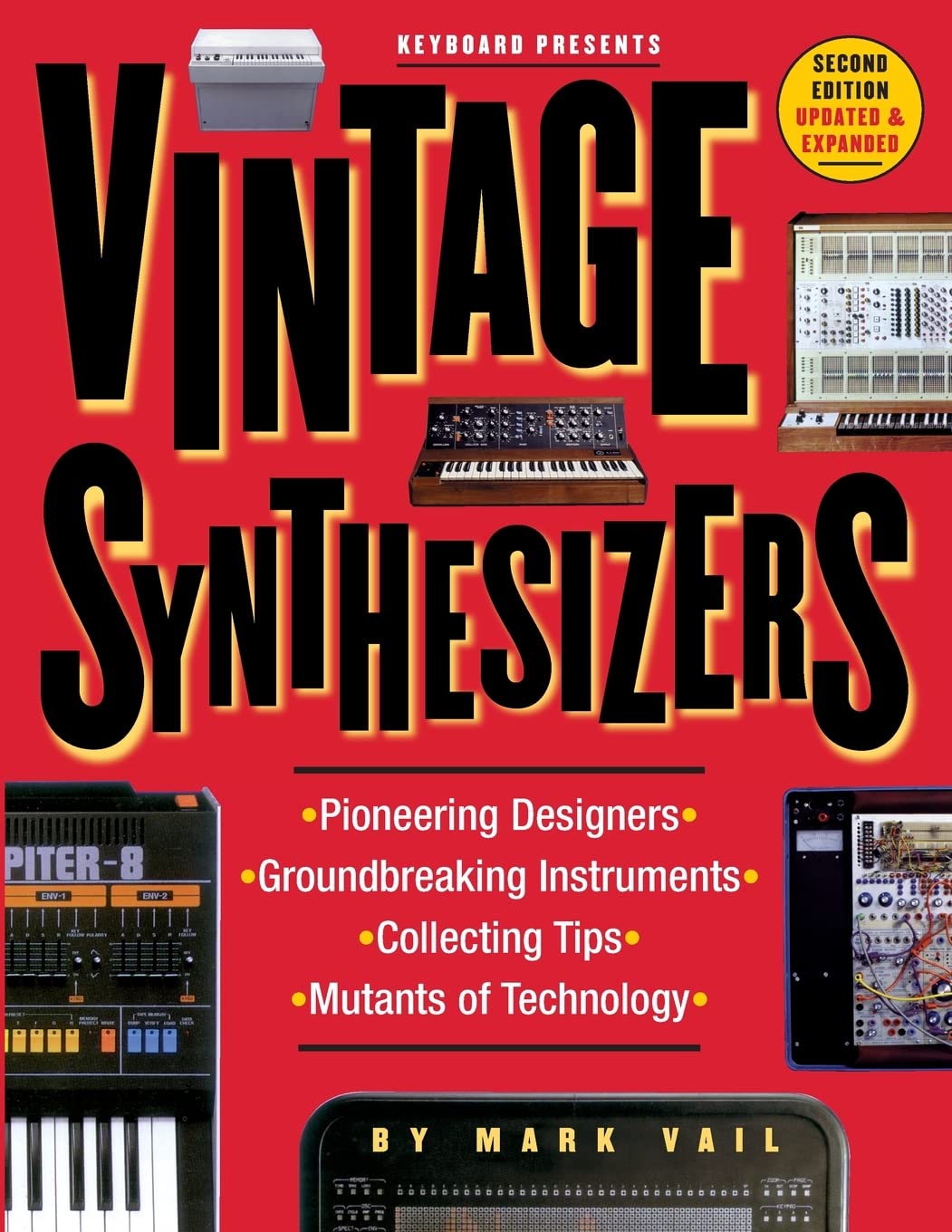
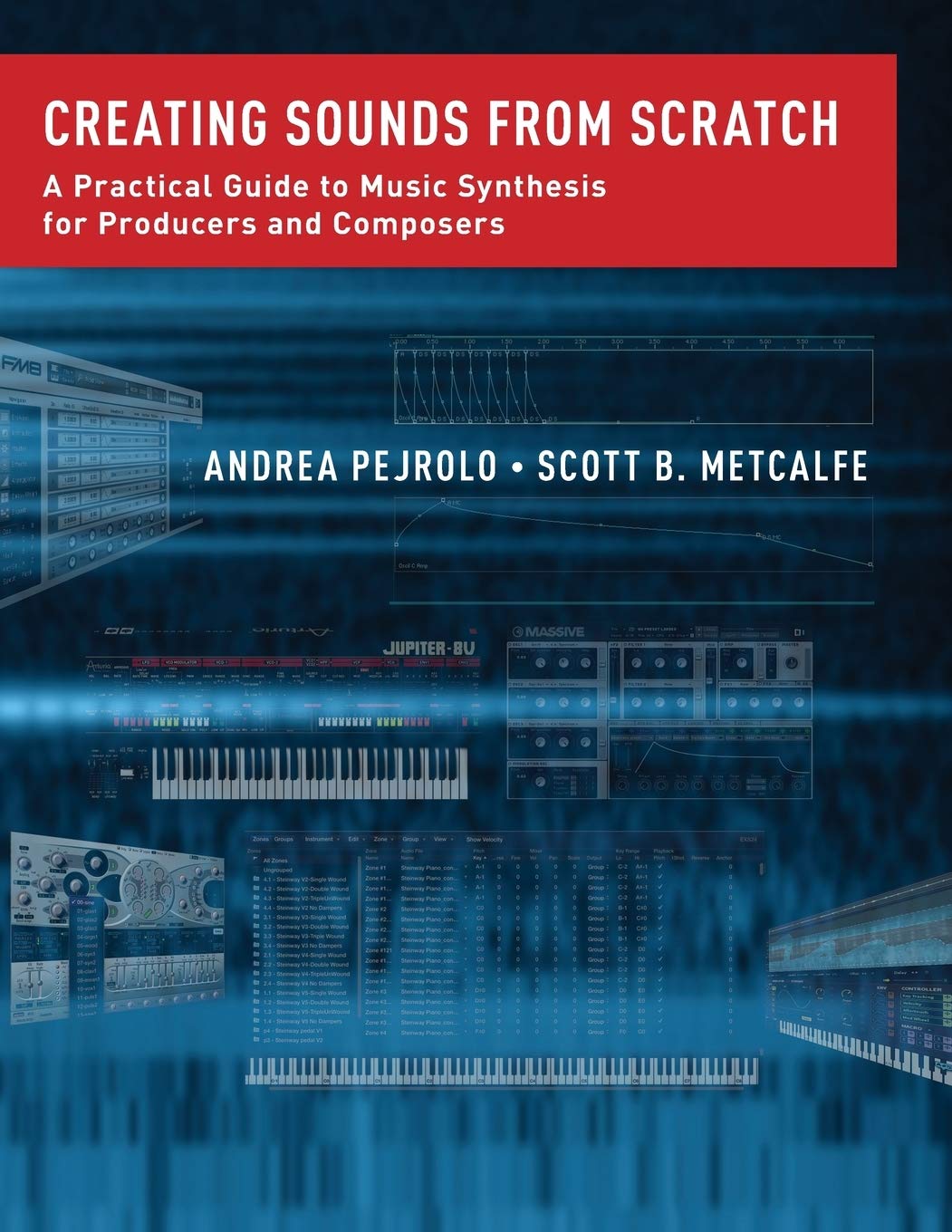
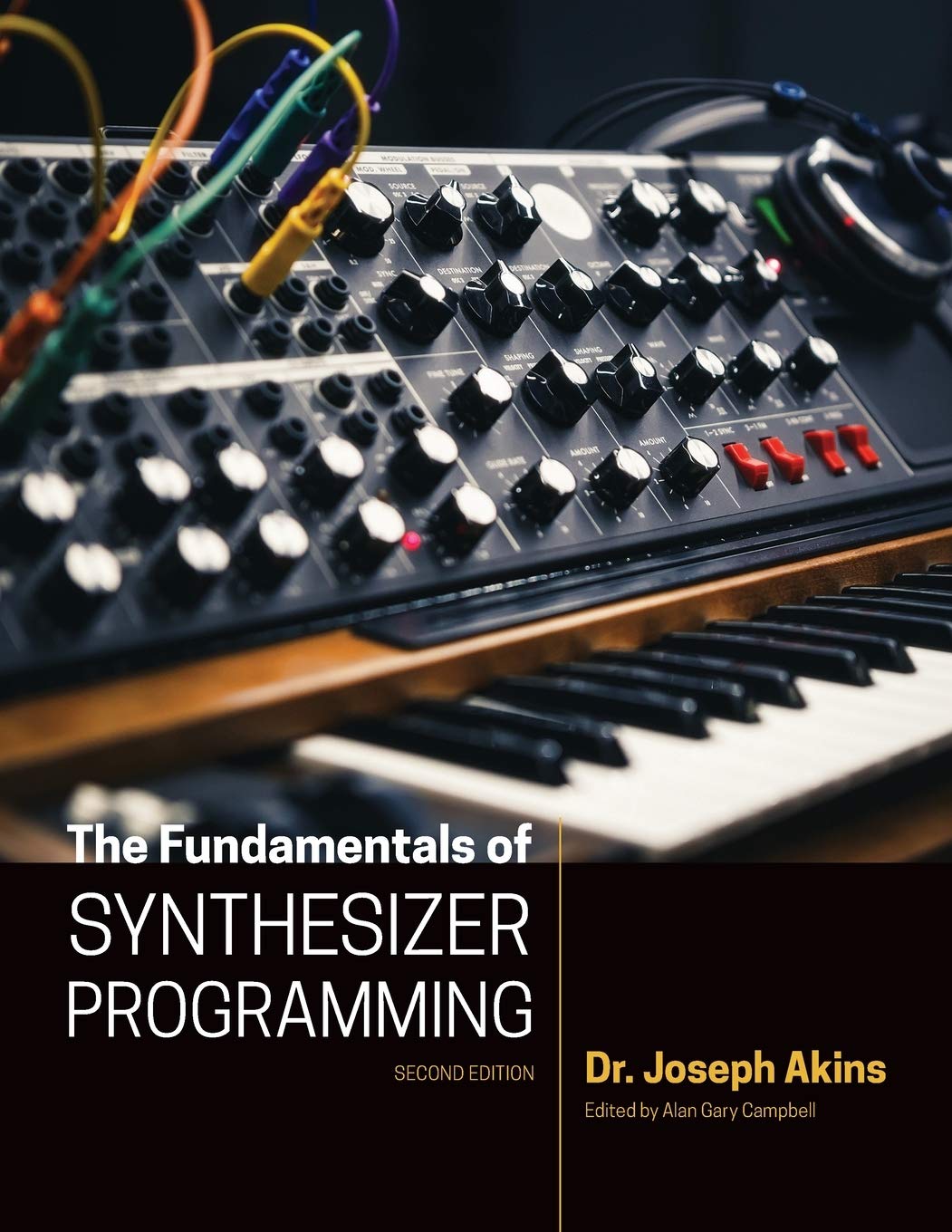
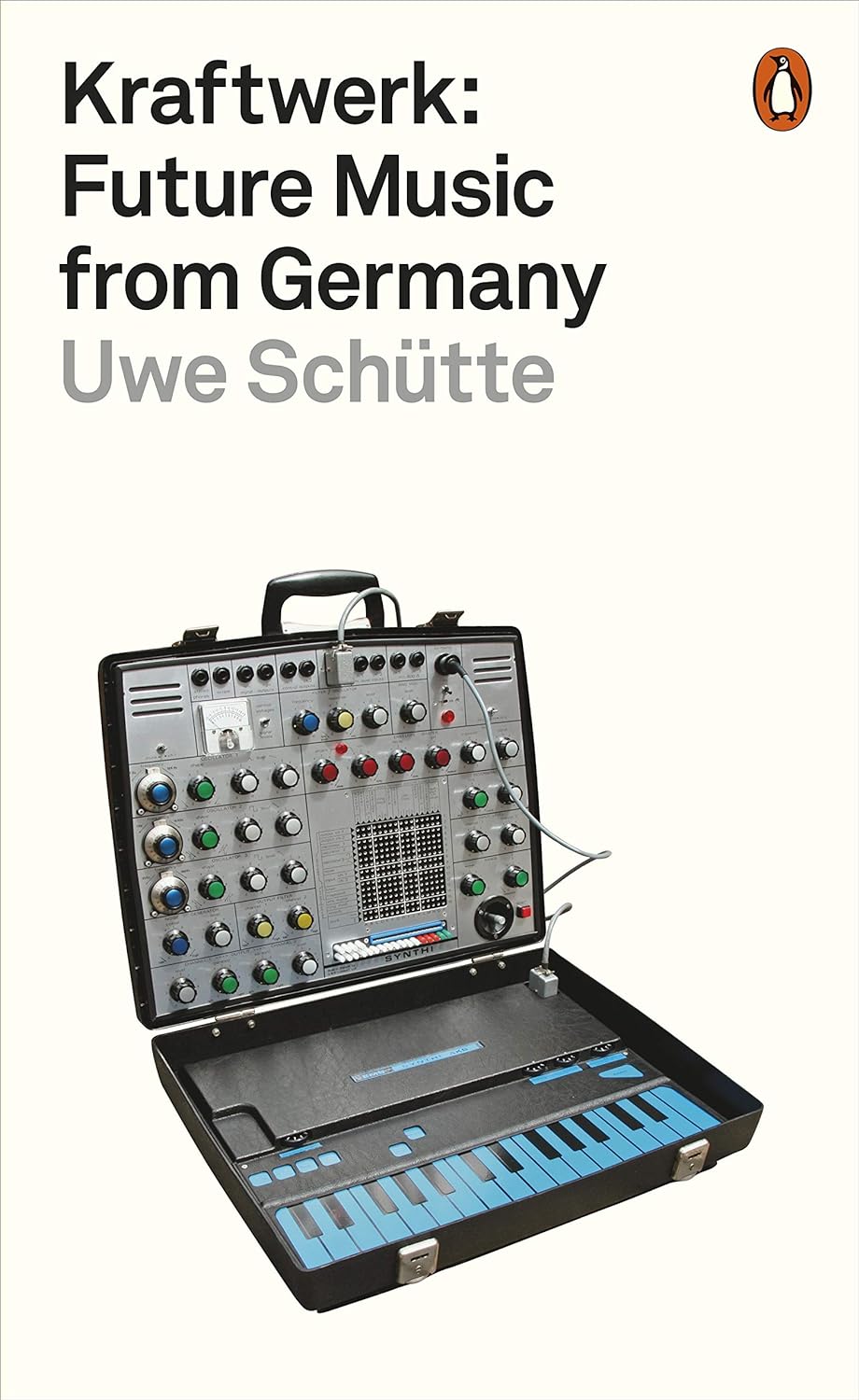
© Matrixsynth - All posts are presented here for informative, historical and educative purposes as applicable within fair use.
MATRIXSYNTH is supported by affiliate links that use cookies to track clickthroughs and sales. See the privacy policy for details.
MATRIXSYNTH - EVERYTHING SYNTH













© Matrixsynth - All posts are presented here for informative, historical and educative purposes as applicable within fair use.
MATRIXSYNTH is supported by affiliate links that use cookies to track clickthroughs and sales. See the privacy policy for details.
MATRIXSYNTH - EVERYTHING SYNTH




















